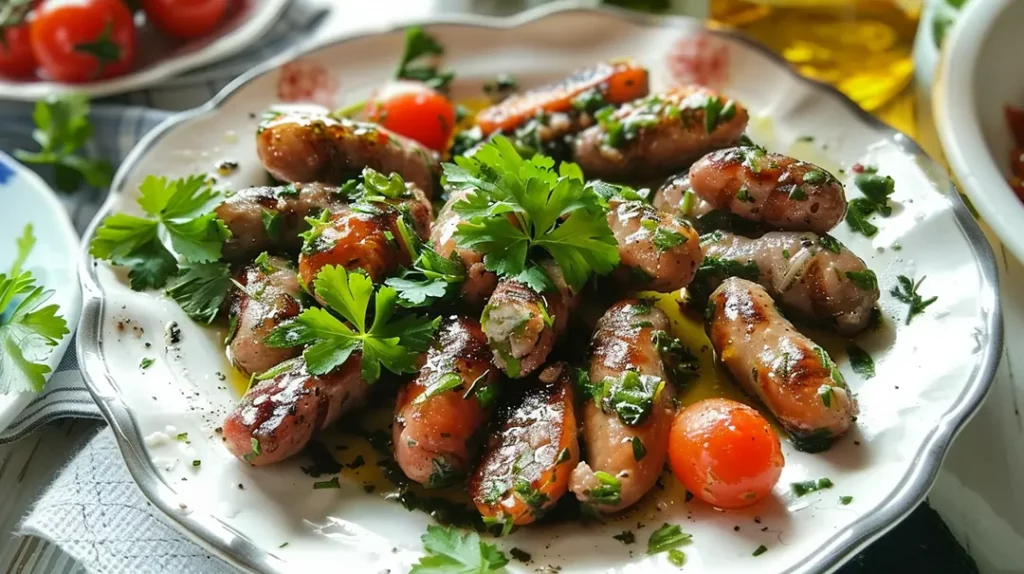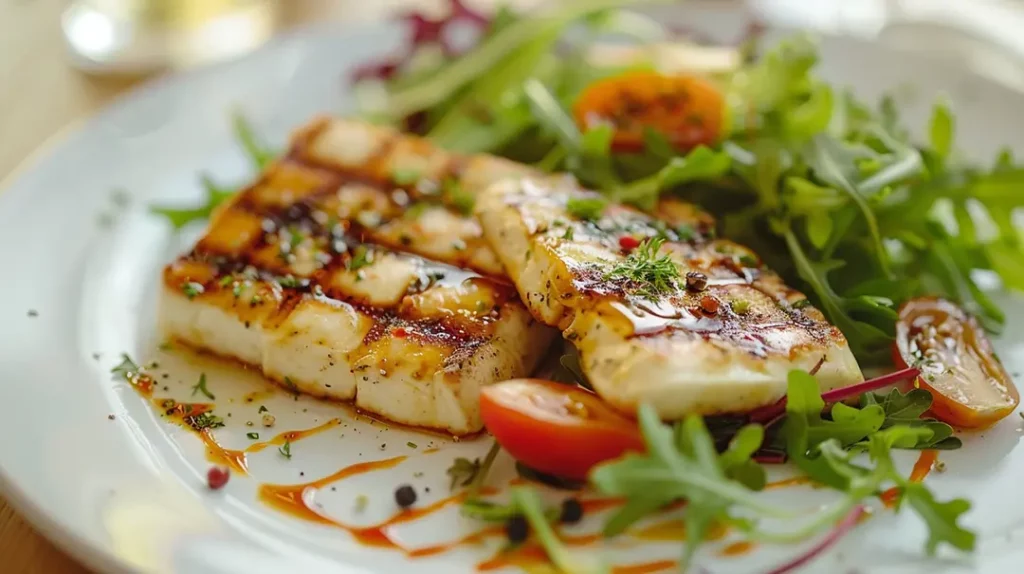
Cyprus's food culture is a blend of Greek and Turkish influences, with unique dishes like Şeftali Kebab in the North and Souvla in the South. Both regions share a love for fresh ingredients, communal dining, and traditional cooking methods, showcasing the island's rich culinary heritage.
Cyprus, a Mediterranean island with a complex history, boasts a rich culinary tradition influenced by both Greek and Turkish cultures. The island’s division into Northern and Southern regions has led to distinct culinary practices, yet both share a foundation of fresh, local ingredients and a love for communal dining. Central to Cypriot cuisine is the use of halloumi cheese, a product that has become symbolic of the island itself. This article explores the unique culinary landscapes of Northern and Southern Cyprus, highlighting key dishes and shared traditions that define Cypriot food culture.
Northern Cyprus, influenced heavily by Turkish and Middle Eastern culinary traditions, offers a unique flavour profile that is distinctly different from its southern counterpart. One of the standout dishes is Şeftali Kebab, a delightful preparation of minced lamb wrapped in caul fat, resulting in a juicy, flavourful kebab. Another traditional dish is Molohiya, a stew made from jute leaves and meat, showcasing the region’s penchant for incorporating greens into hearty meals.
The region’s cuisine tends to favour simpler seasoning, allowing the natural flavours of the ingredients to shine. This approach reflects a broader culinary philosophy that prioritises freshness and authenticity. Local eateries and traditional tavernas are the mainstay of the dining culture in Northern Cyprus, offering a welcoming atmosphere for both locals and visitors to enjoy these traditional dishes.
Southern Cyprus, deeply influenced by Greek culinary traditions, presents a different set of flavours and dishes. The region is known for its liberal use of herbs and spices, creating complex and aromatic dishes. Souvla, large chunks of meat slow-roasted on a spit, is a popular dish that embodies the communal and celebratory aspects of Southern Cypriot dining. Another favourite is Koupepia, vine leaves stuffed with a mixture of rice, herbs, and occasionally meat, which are then slow-cooked to perfection.
Southern Cyprus is also renowned for its wine production, particularly the dessert wine Commandaria, which has a history dating back to ancient times. The diversity of the region’s restaurant scene, offering everything from traditional Cypriot fare to international cuisines, reflects the area’s openness to culinary innovation while maintaining a strong link to its roots.
Despite the political and cultural divisions, Northern and Southern Cyprus share a profound culinary heritage rooted in Mediterranean traditions. The island’s meze culture is a prime example, where a variety of small dishes are served, encouraging a communal dining experience that is central to Cypriot hospitality. This tradition not only highlights the diversity of Cypriot cuisine but also the social aspect of dining, which is a cherished part of the island’s lifestyle.
The use of fresh, locally sourced ingredients is a common thread throughout Cypriot cooking. Olive oil, a staple in Mediterranean diets, is widely used in cooking and as a dressing, while grilled meats and seafood are frequently featured in meals. Traditional cooking methods, such as the use of clay ovens, are still prevalent, preserving the authenticity of the flavours and techniques passed down through generations.
The unique food culture of Cyprus is a testament to the island’s rich history and diverse influences. From the hearty, flavourful dishes of the north to the aromatic and complex flavours of the south, Cypriot cuisine offers a culinary journey that is both varied and deeply rooted in tradition. Whether through a simple meze or a celebratory feast, the food of Cyprus continues to reflect the island’s vibrant culture and heritage.

Sheftalia is a cherished traditional Cypriot sausage that highlights the island’s rich culinary heritage, enjoyed across both the northern and southern regions. This unique dish features a blend of minced pork or lamb mixed with onions, parsley, and spices, encased in caul fat—a thin membrane from the animal’s stomach. Grilled over charcoal, Sheftalia is known for its smoky flavour and tender texture. Typically served with pita bread, fresh salads, and a squeeze of lemon, Sheftalia is a staple at barbecues and festive gatherings, reflecting the island’s love for simple yet flavorful dishes.
Halloumi, a semi-hard cheese made from a mixture of sheep and goat’s milk, is a cornerstone of Cypriot cuisine and a symbol of the island’s agricultural heritage. This cheese is unique in its texture, which allows it to be grilled or fried without melting, making it a versatile ingredient in both Northern and Southern Cypriot dishes.
In Northern Cyprus, halloumi is often enjoyed grilled, paired with watermelon in the summer months, creating a refreshing contrast of flavours. It is also used in traditional pastries like börek, where it adds a creamy richness to the flaky dough. In the south, halloumi is commonly served alongside olives and fresh tomatoes, a simple yet delicious way to start a meal. The cheese is also integral to dishes like halloumi fries, which have gained popularity beyond the island.
The production of halloumi is a skill passed down through generations, and many Cypriot families continue to make their own cheese, ensuring that traditional methods and flavours are preserved. This dedication to tradition underscores the cultural significance of halloumi, which has become a culinary ambassador for Cyprus on the global stage.

Cyprus’s mild Mediterranean climate allows for a rich variety of seasonal ingredients that play a vital role in the island’s cuisine. Seasonal produce such as citrus fruits, grapes, figs, and pomegranates are staples in Cypriot cooking, providing freshness and natural sweetness to many dishes.
In spring, the island is awash with the vibrant green of fresh herbs, which are used extensively in cooking. Mint, parsley, and coriander are particularly popular, adding bright, aromatic notes to salads, stews, and grilled meats. Summer brings an abundance of vegetables, including aubergines, courgettes, and tomatoes, which are often roasted or used in hearty dishes like moussaka and briam.
Autumn and winter see the harvest of olives and carobs, both integral to Cypriot food culture. Olives are pressed into oil, which is a key ingredient in nearly every dish, while carob syrup, a natural sweetener, is used in desserts and traditional sweets like pasteli. The seasonal nature of Cypriot cuisine not only ensures that dishes are fresh and flavourful but also connects the food to the island’s agricultural cycles and natural rhythms.
As Cyprus continues to modernise, its cuisine is evolving, blending traditional recipes with contemporary culinary trends. This evolution is particularly evident in the island’s burgeoning restaurant scene, where chefs are experimenting with new techniques and ingredients while staying true to their culinary roots.
One notable trend is the growing emphasis on sustainability and organic farming. Many Cypriot chefs and producers are advocating for a return to traditional farming methods that are kinder to the environment and yield higher-quality produce. This movement is helping to preserve the island’s biodiversity and culinary heritage for future generations.
The international popularity of Cypriot dishes, particularly halloumi, has also brought global attention to the island’s rich culinary traditions. This increased visibility has led to a greater appreciation for the diversity and depth of Cypriot cuisine, encouraging culinary tourism and fostering a sense of pride among Cypriots.
In conclusion, the unique food culture of Cyprus is a testament to the island’s rich history, diverse influences, and commitment to quality ingredients and traditional cooking methods. From the Turkish-inspired dishes of the north to the Greek-influenced cuisine of the south, Cyprus offers a culinary experience that is both diverse and deeply rooted in its Mediterranean heritage. As the island continues to evolve, its cuisine remains a vibrant and essential part of its cultural identity.

At Med.kitchen, our passion lies in crafting exceptional culinary experiences through our online platform. We specialise in sharing a wealth of knowledge via articles, recipes, courses, and online mentoring, aiming to inspire both novice and seasoned chefs alike. Our focus has shifted from private dining to being an online source of gastronomic inspiration, allowing you to explore and refine your culinary skills from the comfort of your home..